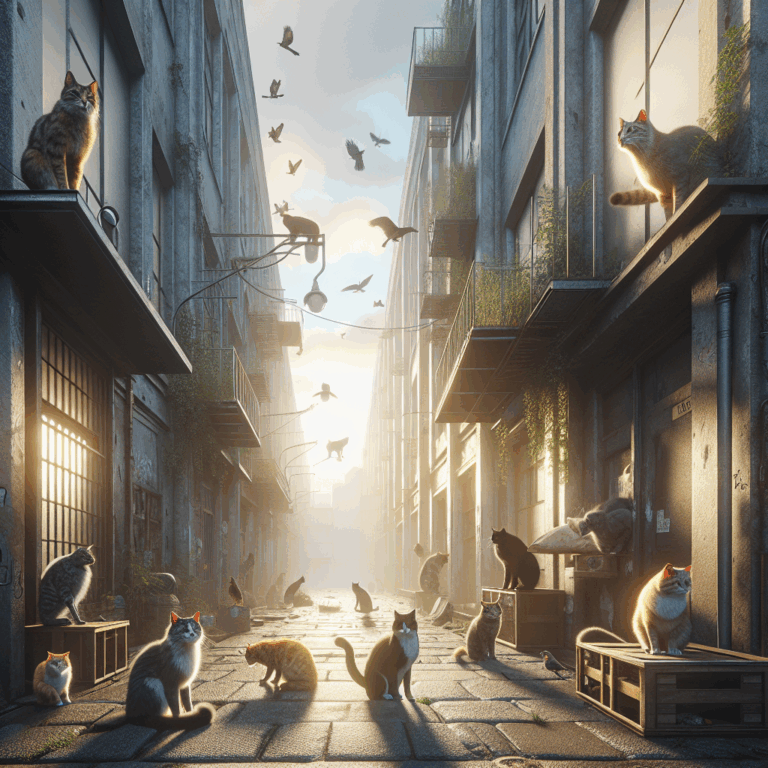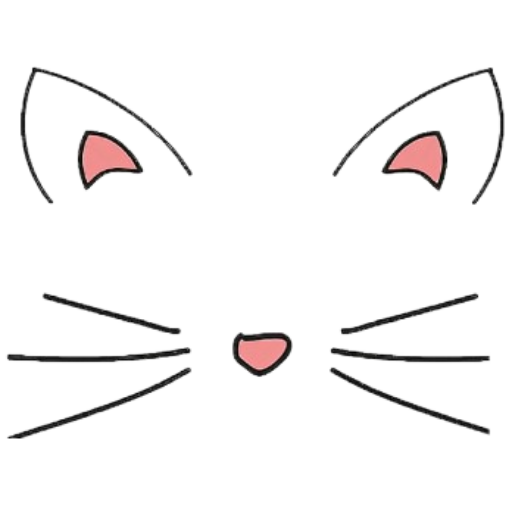The Feline Guardians of the Streets: Cats and Their Influence on Urban Wildlife
- 2 Comments
In the bustling heart of cities around the world, where skyscrapers loom and traffic hums incessantly, a quieter, often overlooked community thrives. These are the street cats, the unofficial sentinels of urban wildlife, whose presence has a surprisingly profound impact on the ecological balance of cityscapes. A new study sheds light on the vital role these felines play in managing urban pest populations, supporting biodiversity, and even influencing the behavior of other urban wildlife.
Street cats, often seen darting between alleyways and lounging on sun-drenched rooftops, are more than mere wanderers in the urban jungle. As natural predators, they help control the population of rodents and other small mammals which can otherwise proliferate in city environments, leading to various public health concerns. Their hunting prowess is not only a boon for human inhabitants but also aids in maintaining an ecological equilibrium. By keeping certain pest populations in check, cats indirectly support the growth of other species by reducing competition for resources.
But the influence of street cats extends beyond mere predation. Their presence can alter the behavior of other urban wildlife. Birds, for instance, become more vigilant and adaptive in areas with a high density of feline hunters. This heightened awareness can lead to changes in feeding patterns and nesting behaviors, essentially driving a form of natural selection that favors more cautious and resilient individuals. While this might seem like a disadvantage, it can actually contribute to the survival of stronger bird populations better equipped to handle urban challenges.
Moreover, the existence of street cats has sparked a wave of community engagement across cities. Volunteer groups dedicated to the welfare of these animals often involve themselves in feeding, sheltering, and even neutering initiatives, fostering a sense of community and shared responsibility among urban dwellers. These groups not only work to improve the lives of the cats but also contribute to a broader awareness of urban wildlife issues, emphasizing the interconnectedness of all city inhabitants, human and animal alike.
However, the presence of street cats is not without controversy. Concerns about their impact on native wildlife and the ethical implications of large feral populations continue to spark debate. Conservationists are split on how best to manage these populations without compromising the ecological roles they play. Innovative solutions, such as TNR (trap-neuter-return) programs, aim to stabilize cat populations while allowing them to continue their role as urban wildlife managers.
As urbanization continues to expand, the relationship between humans, street cats, and urban wildlife will become increasingly important. Understanding and appreciating the subtle influence of these feline guardians is crucial for developing harmonious urban ecosystems. While they may roam the streets largely out of sight, the impact of street cats on urban wildlife is a story of adaptation, survival, and the intricate dance of life in the city—a testament to their enduring legacy as the guardians of our streets.

In the bustling heart of cities around the world, where skyscrapers loom and traffic hums incessantly, a quieter, often overlooked community thrives. These are the street cats, the unofficial sentinels of urban wildlife, whose presence has a surprisingly profound impact on the ecological balance of cityscapes. A new study sheds light on the vital role these felines play in managing urban pest populations, supporting biodiversity, and even influencing the behavior of other urban wildlife.
Street cats, often seen darting between alleyways and lounging on sun-drenched rooftops, are more than mere wanderers in the urban jungle. As natural predators, they help control the population of rodents and other small mammals which can otherwise proliferate in city environments, leading to various public health concerns. Their hunting prowess is not only a boon for human inhabitants but also aids in maintaining an ecological equilibrium. By keeping certain pest populations in check, cats indirectly support the growth of other species by reducing competition for resources.
But the influence of street cats extends beyond mere predation. Their presence can alter the behavior of other urban wildlife. Birds, for instance, become more vigilant and adaptive in areas with a high density of feline hunters. This heightened awareness can lead to changes in feeding patterns and nesting behaviors, essentially driving a form of natural selection that favors more cautious and resilient individuals. While this might seem like a disadvantage, it can actually contribute to the survival of stronger bird populations better equipped to handle urban challenges.
Moreover, the existence of street cats has sparked a wave of community engagement across cities. Volunteer groups dedicated to the welfare of these animals often involve themselves in feeding, sheltering, and even neutering initiatives, fostering a sense of community and shared responsibility among urban dwellers. These groups not only work to improve the lives of the cats but also contribute to a broader awareness of urban wildlife issues, emphasizing the interconnectedness of all city inhabitants, human and animal alike.
However, the presence of street cats is not without controversy. Concerns about their impact on native wildlife and the ethical implications of large feral populations continue to spark debate. Conservationists are split on how best to manage these populations without compromising the ecological roles they play. Innovative solutions, such as TNR (trap-neuter-return) programs, aim to stabilize cat populations while allowing them to continue their role as urban wildlife managers.
As urbanization continues to expand, the relationship between humans, street cats, and urban wildlife will become increasingly important. Understanding and appreciating the subtle influence of these feline guardians is crucial for developing harmonious urban ecosystems. While they may roam the streets largely out of sight, the impact of street cats on urban wildlife is a story of adaptation, survival, and the intricate dance of life in the city—a testament to their enduring legacy as the guardians of our streets.



2 thoughts on “The Feline Guardians of the Streets: Cats and Their Influence on Urban Wildlife”
This fascinating article highlights the important role street cats play in maintaining the balance of urban ecosystems.
It’s great to see the role of street cats being recognized. They truly have a unique impact on urban ecosystems.